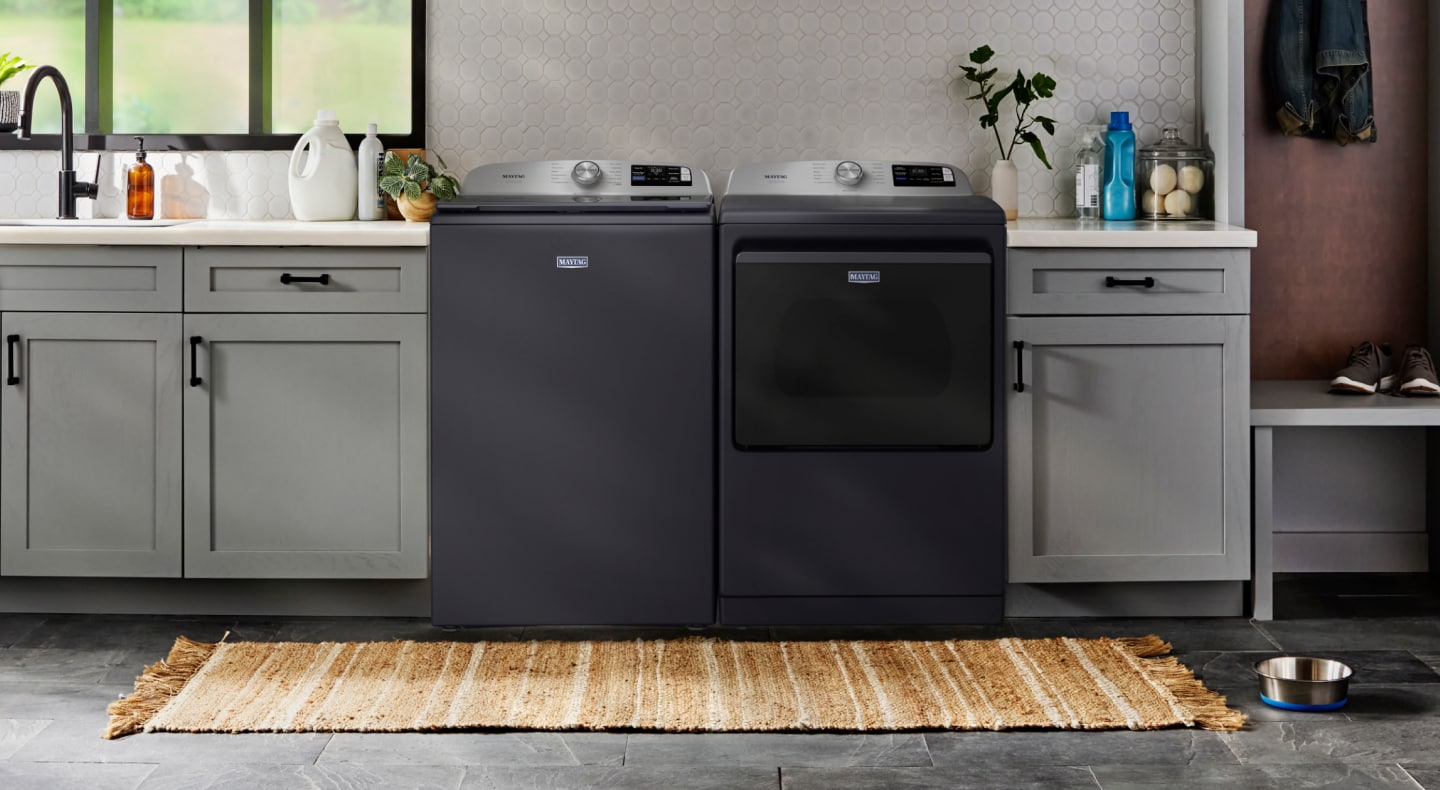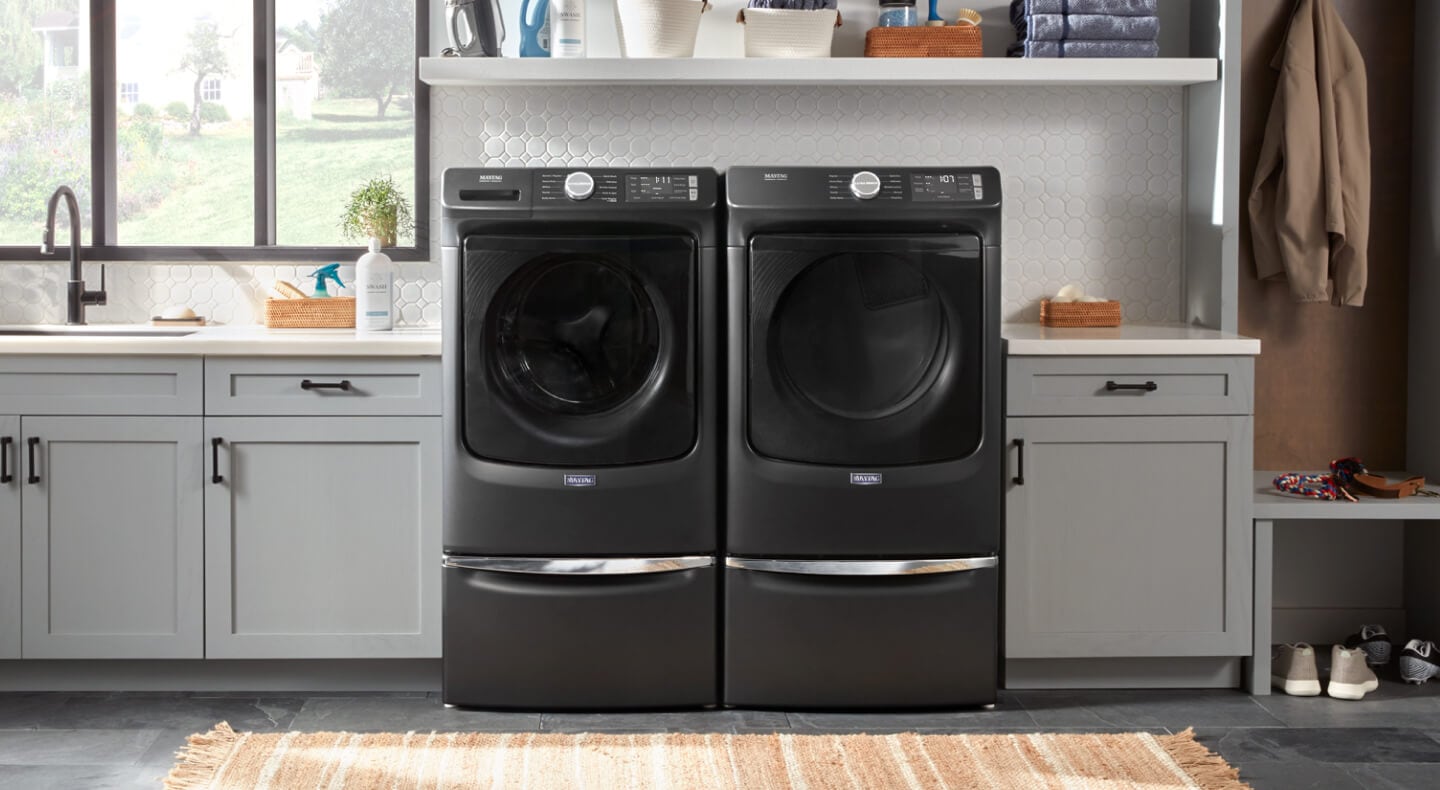
FRONT LOAD VS. TOP LOAD WASHERS: WHICH TO CHOOSE?
Although you might have experience with both front load and top load washing machines, it can still be challenging to determine which washer type is right for your home. When shopping for a new washing machine, it’s important to consider the general differences between front and top load washers, including door access, console placement, installation flexibility, capacity, wash action, water levels and efficiency.
Learn more about the differences between front load and top load washing machines.
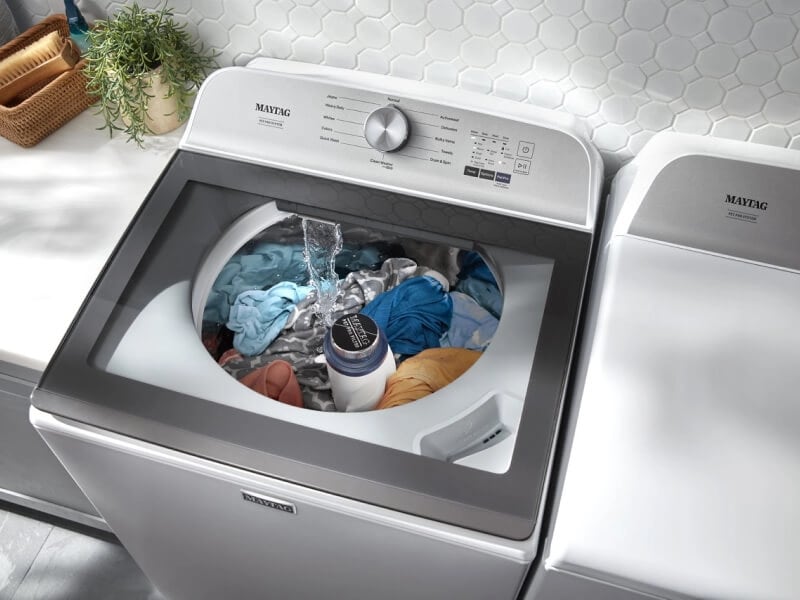
WHAT IS A TOP LOAD WASHER?
Top load washers open from above, making it easy to toss clothes in without bending down. Inside, you’ll find either an agitator—a central post that twists back and forth—or an impeller, which spins to create gentle friction between fabrics.
Top load washers can sit side by side with a dryer, rather than stacking, and typically feature controls on a back panel.
SHOP MAYTAG® TOP LOAD WASHERS
If you choose a top load washer, you’ll need to decide between an agitator or impeller design. Learn more about the differences between agitator and impeller washers or start browsing all Maytag® top load washers. You’ll find select Maytag® washers, like this model, with convenient features like the Slow-Close Glass Lid, which lets you keep track of the action inside your washer. If you’ve decided on a top load washer, here’s how to hook it up when it arrives.
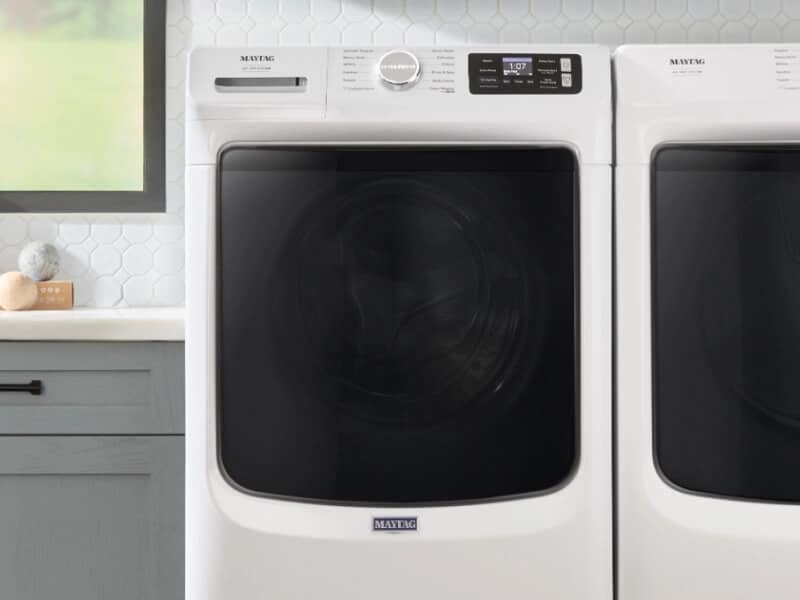
WHAT IS A FRONT LOAD WASHER?
Front load washers have a door on the front, so you can easily slide clothes in and out. They’re designed to pair neatly with a front load dryer and can typically stack to save space. Instead of an agitator or impeller, front load washers tumble clothes in a gentle rotation to create friction that helps lift away dirt.
SHOP MAYTAG® FRONT LOAD WASHERS
Shop front load washers from Maytag brand to see which one works for you, and learn how to install a front load washer in your home. Select Maytag® front load washers feature the built-in Pet Pro Filter that helps to remove pet hair when used with the Pet Pro Option.1 Plus, if you forgot to add something to your load, select Maytag® front load washers include the Late Add Feature that lets you simply press the start button to pause the washer and add in last-minute items.
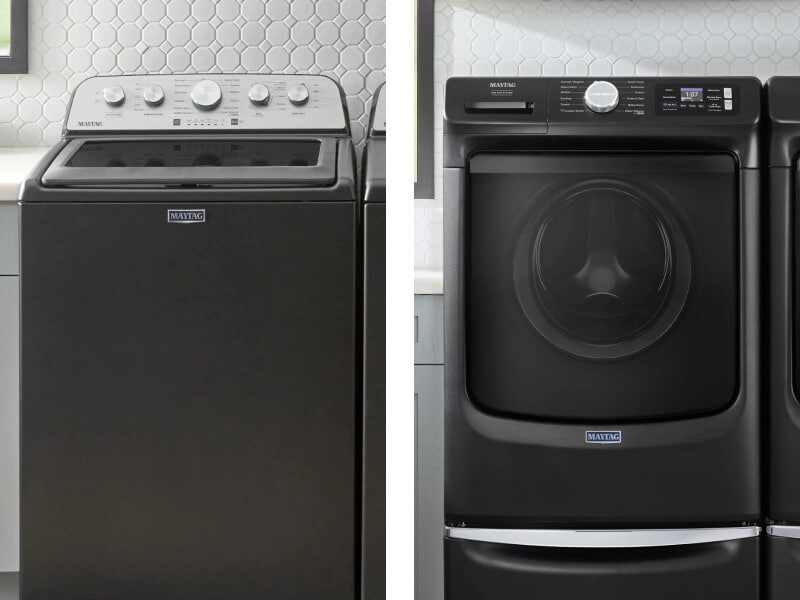
WHAT ARE THE DIFFERENCES BETWEEN TOP LOAD VS. FRONT LOAD WASHERS?
The biggest difference between front loading and top loading washing machines is in the way you load and unload clothes.
On front load models, clothes are inserted through the door at the front of the washer.
On top load washers, clothes are inserted by opening the lid on the top of the appliance.
Other differences between top load vs. front load washers include how much water is used, the cycle length times and washing action. Newer front and top load washer models have improved features and capabilities to increase efficiency and convenience, while ensuring the best care for your clothes.
Compare the differences of front load vs. top load washers to help you decide which model is right for you.
1. DESIGN
While differences between top and front load washers may seem subtle, each model is designed to have an impact on how your clothes are cleaned.
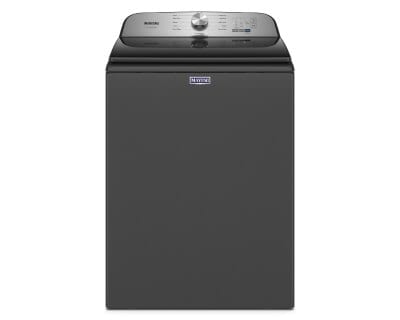
TOP LOAD WASHERS
Top load washers open from the top, a design that allows the machine to take up less horizontal space in your laundry room. Wash action is driven by an impeller or agitator, and matching dryers still open from the front.
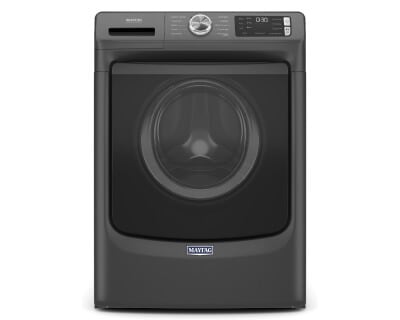
FRONT LOAD WASHERS
On front load washers, the door swings open from the front and wash action is delivered via a tumbler, a mechanism similar to that of a traditional tumbling dryer. Front load washer and dryer pairs may be stackable for added convenience in small or vertical spaces.
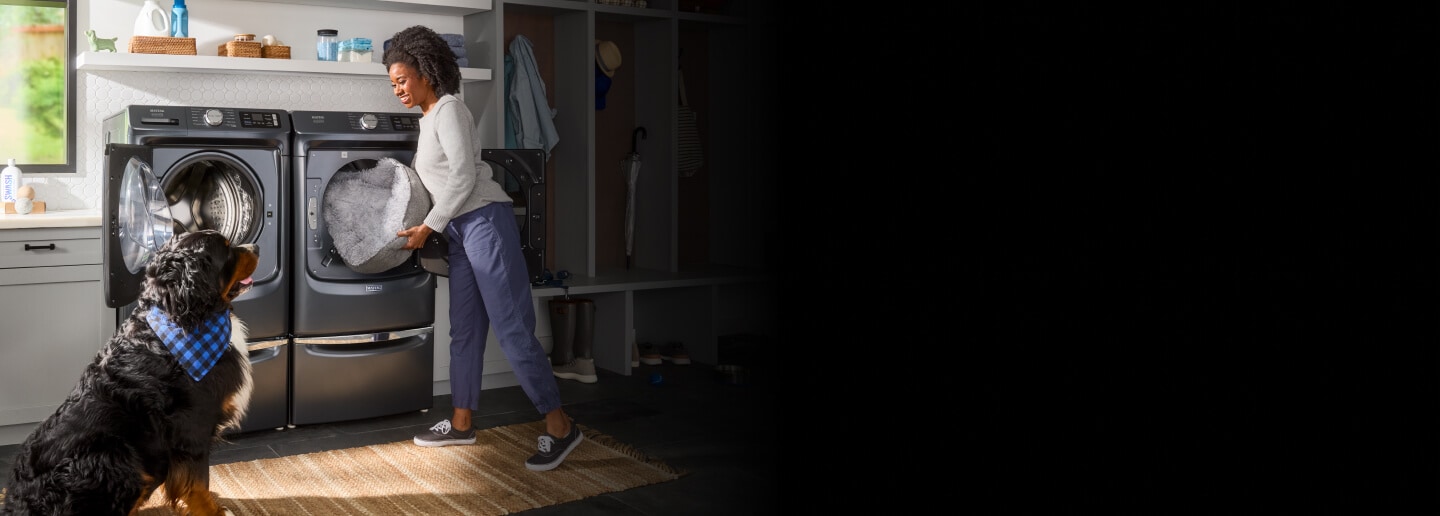
FRONT LOAD PET PRO WASHER
CONQUER PET HAIR LIKE A PRO
The Maytag® front load washer with Pet Pro Option unleashes additional water and a deep rinse to help remove pet hair
2. COMFORT AND CONVENIENCE
Washing machines play a major role in simplifying daily life by expediting laundry tasks. Therefore, selecting a washer that aligns with your hectic lifestyle is crucial, enabling you to seamlessly transition to the next item on your to-do list. Depending on your preferences, choose a top load or front load washer that suits the needs of your space.
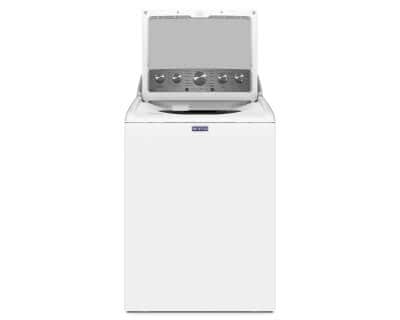
TOP LOAD WASHERS
Depending on your height or the washer’s height, reaching the bottom of a top load washer might be more difficult. Unlike many front load washers, top load washers aren’t stackable with dryer pairs.
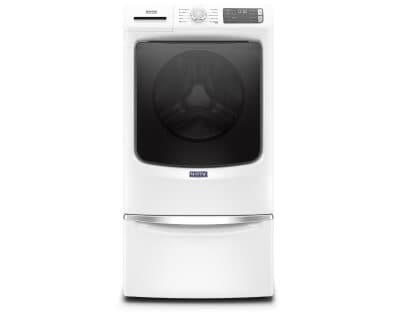
FRONT LOAD WASHERS
A great benefit of front load washers is their stacking ability, which allows you to take as much advantage of vertical space as possible. Front load washers may also require a bit of bending or reaching. A simple solution to this is laundry pedestals. Washer and dryer pedestals can bring your appliances to a more convenient height, and some offer storage for detergent and fabric softener.
SHOP MAYTAG® LAUNDRY PEDESTALS
Laundry pedestals like these by Maytag brand can help you maximize the comfort and convenience of your appliances to help make laundry days more manageable. These pedestals raise your washer and dryer to a more comfortable height for loading and unloading. Plus, select Maytag® pedestals feature Chrome Handles that provide a comfortable grip to open the drawer.
3. SETTINGS AND CONTROL LOCATIONS
While top load and front load washers may appear similar at first glance, their machine controls often differ. Control differences have a direct impact on how your clothes are cleaned, so it’s important to carefully consider the features offered by each washer.
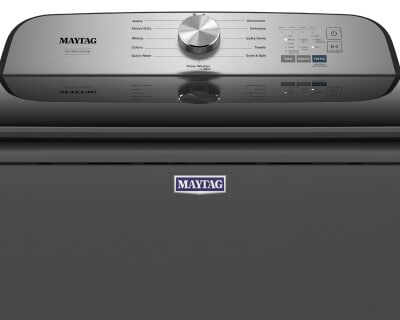
TOP LOAD WASHERS
Top load washers include a console featuring the controls used to operate the appliance. Depending on the brand and model, some top load washers may feature a Deep Water Wash setting.
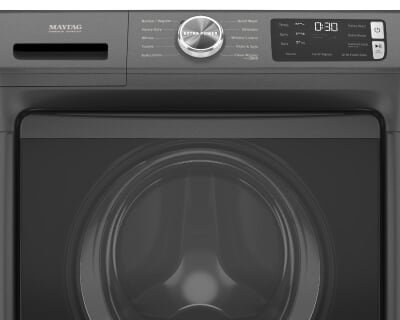
FRONT LOAD WASHERS
On front load washers, the controls are usually integrated into the front of the appliance, either above or beside the front-facing door. Front load washers often include more settings compared to their top loading counterparts, such as spin speeds.
SHOP MAYTAG® PET PRO WASHERS
Maytag® washers clean up after every member of the family. The Pet Pro Option on select Maytag® washers unleashes additional water and a deep rinse to assist the Pet Pro Filter, which lifts and captures pet hair from clothes. Once removed, pet hair is caught in the built-in Pet Pro Filter for a clean you can see.
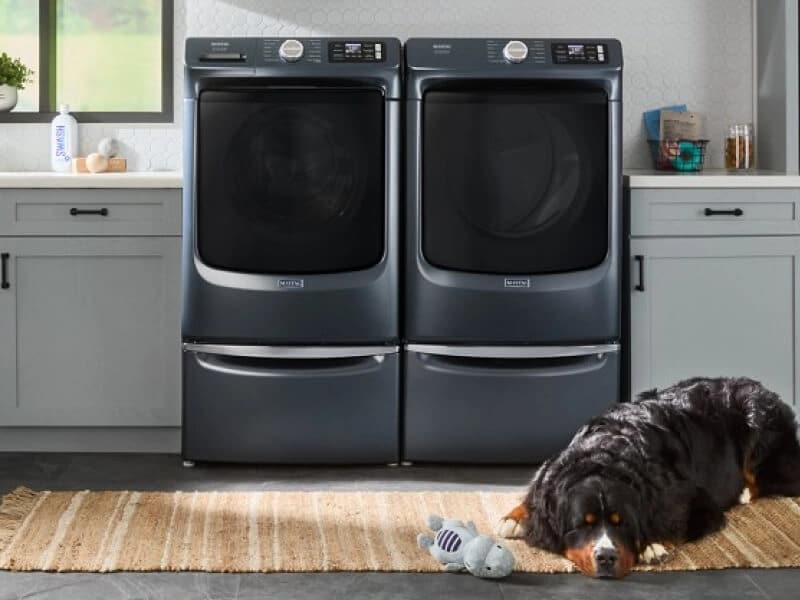
4. CAPACITY
Depending on your needs, you may require a washing machine that can accommodate larger or lighter loads. Before you commit to either a top load or front load washer, consider the size of your average laundry loads and how often you wash your clothes to help make the best choice.
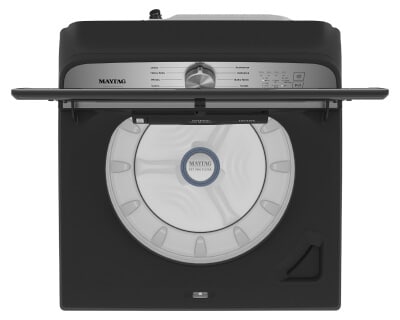
TOP LOAD WASHERS
Top load models have a wide range of capacities but usually offer the largest capacities available. For instance, Maytag brand offers a large capacity 5.3 cu. ft. smart top-load washer to help you get the most out of every wash cycle.
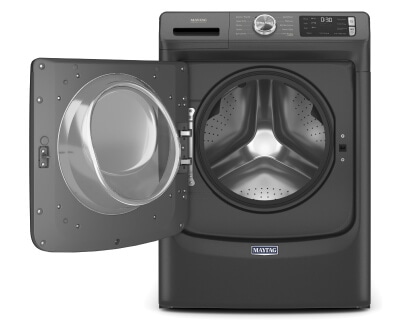
FRONT LOAD WASHERS
Front load washers are also available in larger capacities. Some models handle larger loads than top load washers of the same size because they don't have a central agitator taking up space. However, avoid overcrowding your front load washer to ensure the door is able to close properly.
SHOP MAYTAG® LARGE CAPACITY WASHERS
Large-capacity Maytag® washers can handle big loads with cleaning power you can count on. Select Maytag® washers feature a Built-In Water Faucet, which allows you to rinse, spot treat or soak clothes right in the washer. When you can’t get to the laundry right when the cycle ends, the 16-Hr Fresh Hold® Option on some Maytag® washers keeps clean clothes smelling fresh in the washer with an internal fan and intermittent tumbling that circulates air through clothes for up to 16 hours after the wash cycle ends.
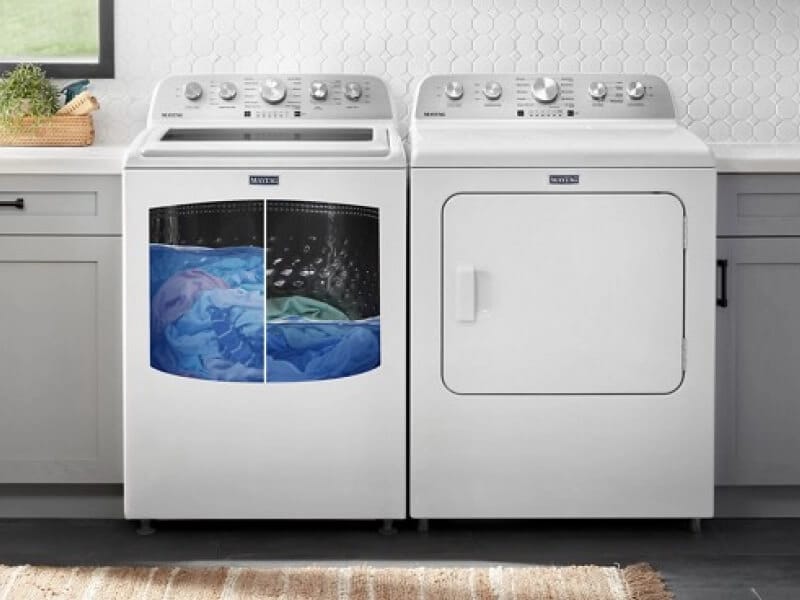
5. EFFICIENCY & WATER LEVELS
Due to their operational differences, top load and front load washers use different levels of water to wash clothes. ENERGY STAR® Certified washers, available in both top and front load models, also generally perform at different efficiency levels.
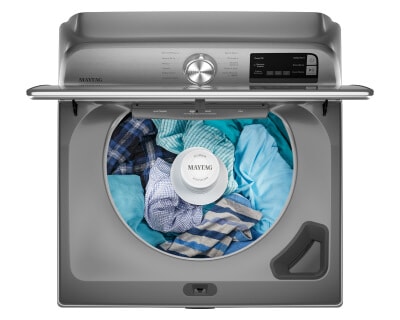
TOP LOAD WASHERS
Many high-efficiency top load washers use low water levels to meet efficiency standards, and deliver more optimal cleaning results with a higher concentration of detergent. However, some models allow you to add more water to select cycles—like the Deep Fill Option from Maytag brand.
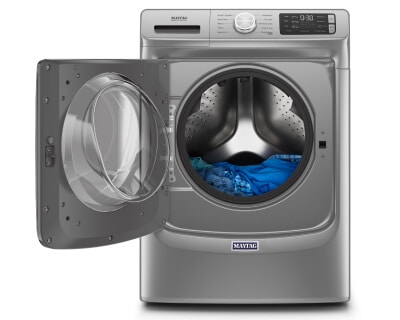
FRONT LOAD WASHERS
Front load models that use HE (high-efficiency) detergent use lower water levels and concentrated cleaning. This means you probably don’t need to use as much detergent as you might be used to.
By using a high-efficiency cleaning solution like Swash® laundry detergent, you’ll be able to keep your clothes clean with less detergent through an ultra-concentrated formula.
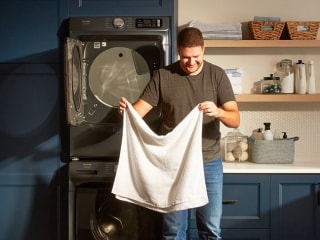
Find Your Next Washing Machine
SHOP SWASH® LAUNDRY DETERGENT
High-efficiency Swash® laundry detergent can be used in both HE and non-HE washers. It’s designed to fight stains without phosphates and has 8x the concentration so you can use less per load. The convenient Auto-Stop Top will stop automatically when you have the right amount—a single squeeze for standard loads and two squeezes for larger loads. Get the clean you want with no guess and no mess.
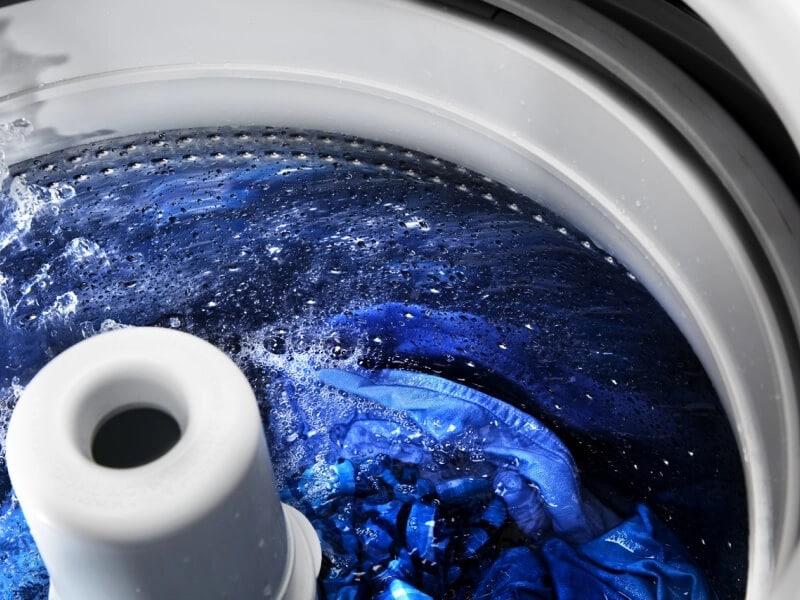
6. WASHING ACTION
Top load and front load washing machines clean laundry using a spinning or twisting action. The main difference is that a top load washer has either an agitator or impeller in the center of the wash basket to create this motion. A front load washer tumbles laundry, creating friction to clean items.
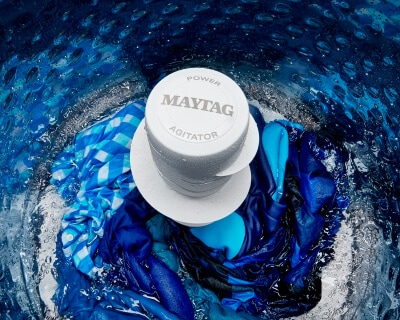
TOP LOAD WASHERS
The washing action of a top load washer is generated from an agitator or impeller in the center of the wash basket. An agitator is a tall, central post that twists back and forth, rubbing against laundry to help remove stains and break down soils. Similarly, an impeller is a low-profile cone or disc that spins in the center to create friction, although it’s the rubbing action of the clothes against each other that cleans them.
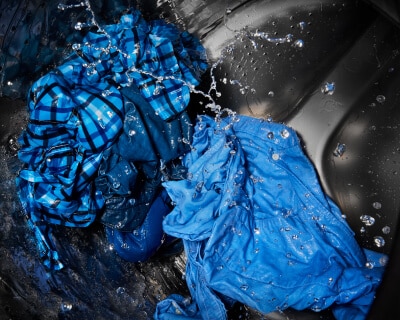
FRONT LOAD WASHERS
Front load washers typically use less water and tumble items, generating friction to clean your laundry. This gentle washing action helps to lift dirt and stains and tends to work harder at cleaning clothes. A faster spinning speed toward the end of a wash cycle can squeeze out more water to help shorten drying time.
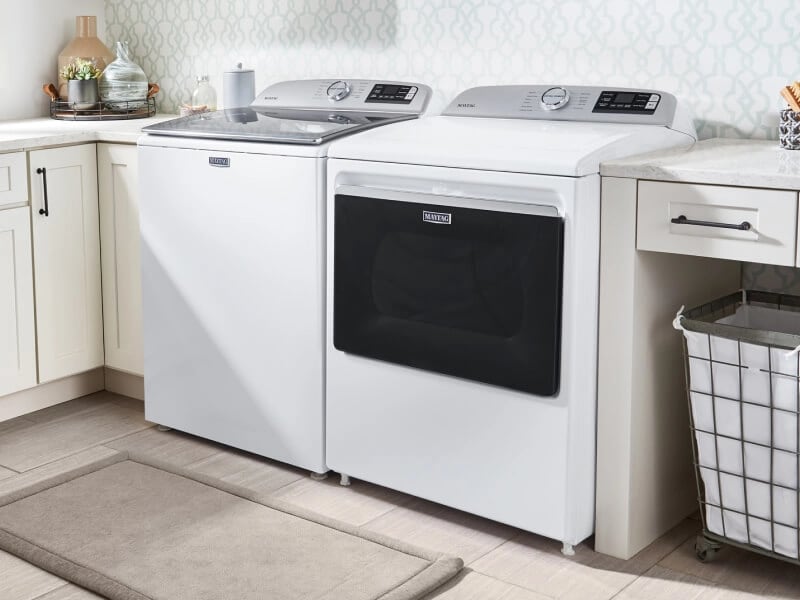
WHICH IS BETTER: FRONT LOAD OR TOP LOAD WASHERS?
Front load and top load washers each have their own unique set of benefits. If you’re looking to buy a new washer, take into account the advantages of each machine type before choosing one over the other.
BENEFITS OF FRONT LOAD WASHERS
Front loading washing machines tend to be more efficient since they typically use less water. Though using less water generally means longer wash times, the fast-spinning drum helps extract excess water, which can speed up drying time.
Additional advantages of front load washers include the following:
Leader in HE (high-efficiency) cleaning: Since they use less water, HE washers call for a more concentrated cleaning solution, which allows you to get the same clean clothes with less detergent.
Generally uses less water: On average, a front load washer uses 7 gallons of water per laundry load as compared to 13 to 19 gallons for a top load washer. Only the bottom portion of the washer fills with water and then the washer drum tumbles the clothes through it.
Can result in shorter drying times and energy savings: The drum of a front load washer has a faster spin speed, which can squeeze more excess water out of clothing at the end of a wash cycle, which may result in shorter drying times.
Gentle on clothes: The tumbling motion of the front load washer drum is often gentler than the friction from an agitator or impeller in a top load washer.
Tough on laundry stains: This is due to the tumble wash action of a front load washer.
Optimizes space: Maximize your laundry room layout by choosing a front load stackable model.
BENEFITS OF TOP LOAD WASHERS
If you’re looking for a model with a more traditional design for your home, top load washers offer a familiar appliance setup that utilizes washing action with an impeller or agitator to help keep clothes clean. In addition, the lack of a sealing gasket around the lid of top load washers helps make them easy to clean and maintain.
Additional benefits of top load washers include the following:
Fast wash cycle times available: And top load washers generally have a shorter spin phase than front load models.
Choice between agitator or impeller washing designs: An agitator is a tall spindle with fins that twist back and forth against the laundry, and an impeller is a low-profile cone that spins to rub the items against each other to clean clothes.
Deep Water Wash functionality on select models: This option allows you to choose a deeper water level for larger loads, heavily soiled items, and sturdy fabrics like towels and jeans.
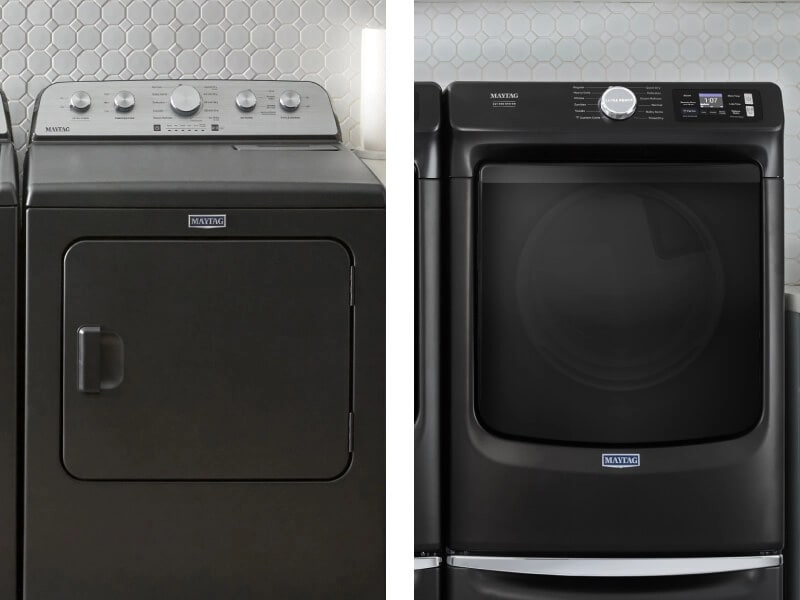
WHAT’S THE DIFFERENCE BETWEEN FRONT LOAD VS. TOP LOAD DRYERS?
Both top and front load dryers open from the front, but top load dryers place controls on a back panel. Front load dryers pair with front load washers and usually keep the controls on the front of the unit, making it possible to stack the two and save space.
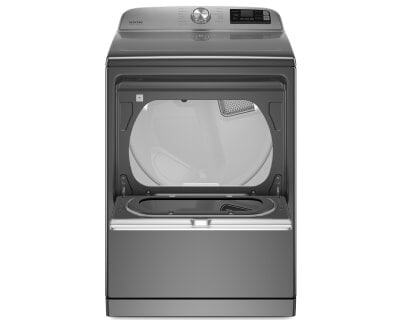
TOP LOAD DRYERS
Top load dryers, like these models from Maytag® brand, open from the front but are styled to match top load washers for a cohesive look in the laundry room. They’re often designed with complementary cycles and settings, so both machines in the pair work in sync to handle your laundry needs.
SHOP MAYTAG® TOP LOAD DRYERS
Find top load dryers from Maytag brand that add ease to your routine. Select Maytag® dryers feature the Wrinkle Prevent Option that tumbles clothes for up to 150 minutes after the cycle ends to help prevent wrinkles from forming. Or, take advantage of Cycle Notifications on select Maytag® dryers that let you get end-of-cycle notifications on your smartphone with the option to Assign a Task to family members to keep laundry moving.2
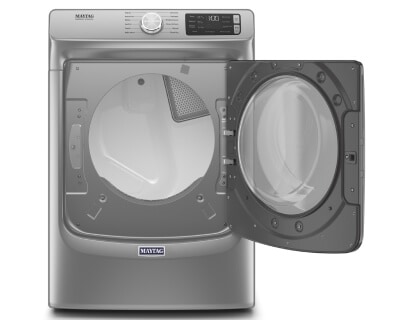
FRONT LOAD DRYERS
Front load dryers also open from the front, with doors that swing to the side or drop down for easy loading. Their controls are often placed along the front of the dryer, helping them stack seamlessly with a matching front load washer.
SHOP MAYTAG® FRONT LOAD DRYERS
Get dependable drying with front load dryers from Maytag brand. Extra Power on select Maytag® dryers boosts drying power on any cycle by extending time, heat and tumbling.3 One push helps prevent underdrying by getting thick fabrics, pockets and seams drier the first time. Select Maytag® dryers also feature Advanced Moisture Sensing that monitors inside moisture and air temperatures to help evenly dry loads.
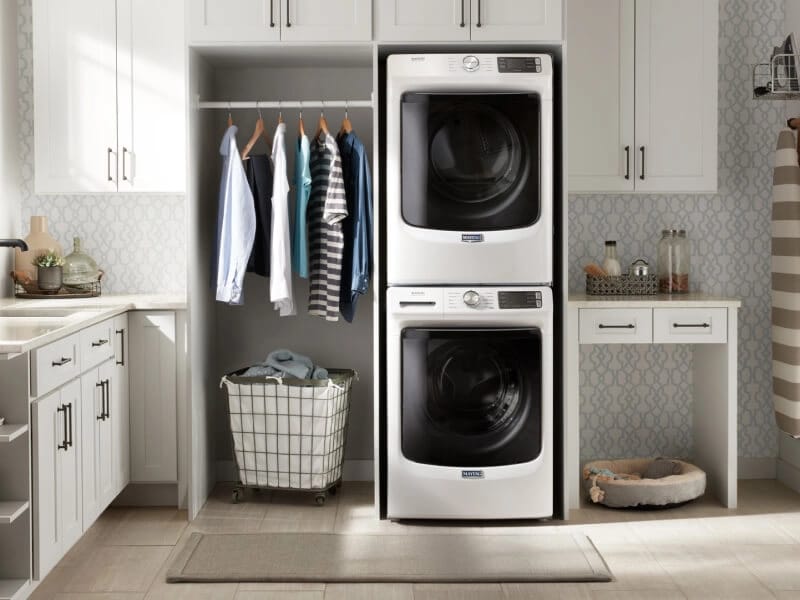
SHOULD I BUY A FRONT LOAD OR TOP LOAD WASHER?
If you want the flexibility to stack your washer and dryer, a front load pair can give you the option to arrange them side by side or stacked to suit your space. Your choice ultimately depends on whether you have, or plan to have, a top or front load dryer and if you prefer a coordinated set.
EXPLORE MAYTAG® WASHING MACHINES
Washing machines are the unsung heroes of your laundry room—they’re there to get the job done when you need it. Explore the Maytag brand collection of washer models, including the best-rated washers and models featuring the Extra Power Button to boost stain-fighting action on any wash cycle. Power through laundry day with the Maytag® washing machine that’s right for you.
Was this article helpful? Pass it on
DISCOVER MORE FROM MAYTAG BRAND
1. Results vary based on pet hair type and fabric type
2. Appliance must be set to remote enable. WiFi & App Required. Features subject to change. Details & privacy info at maytag.com/connect.
3. Results may vary based on load size and type.

